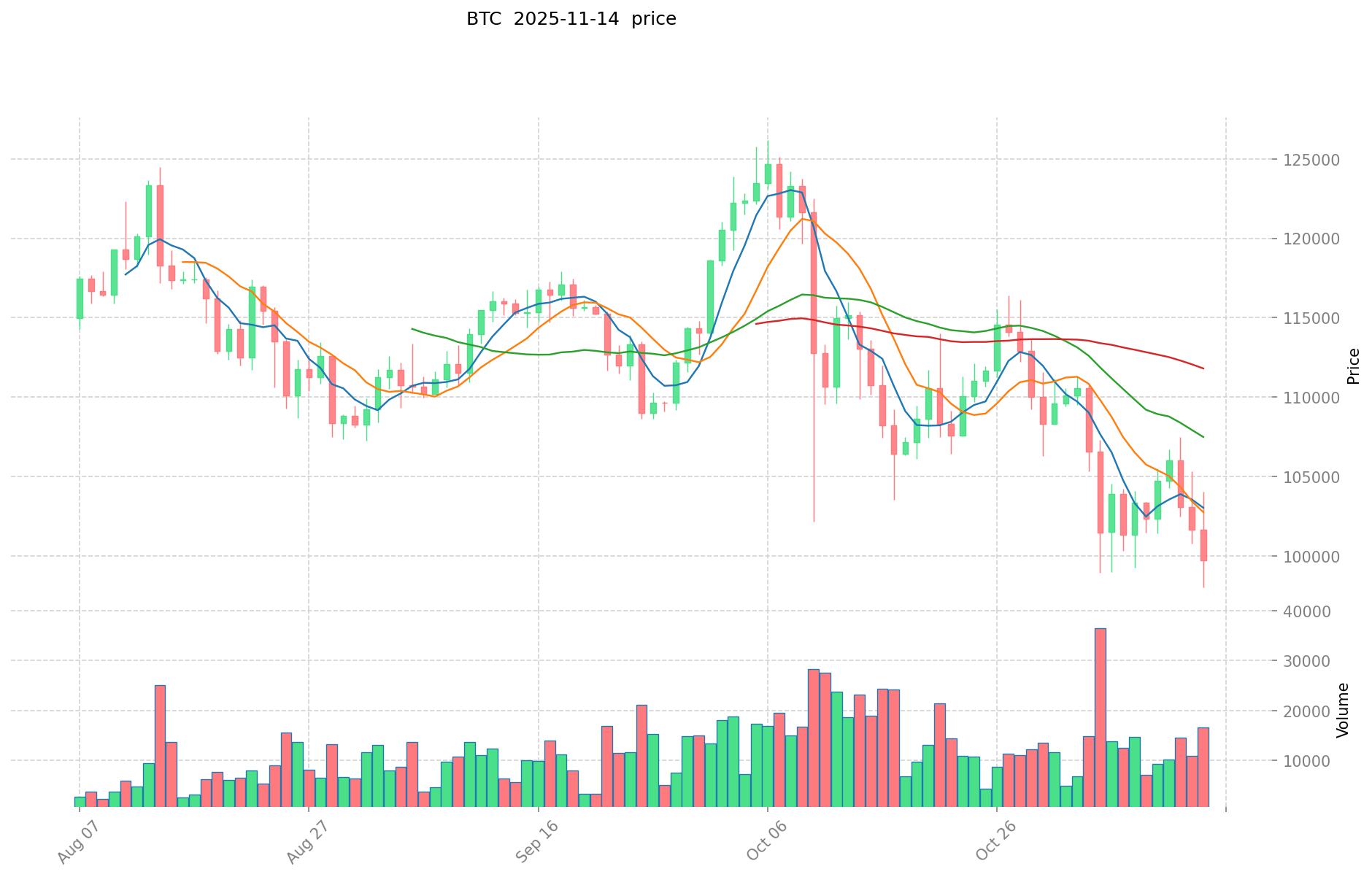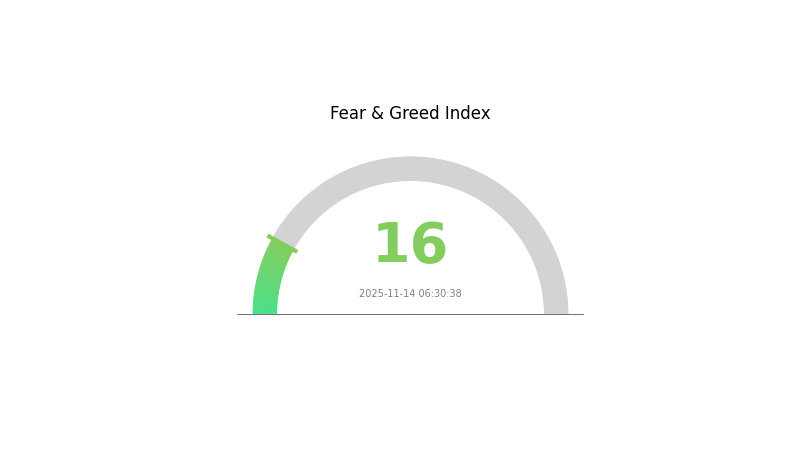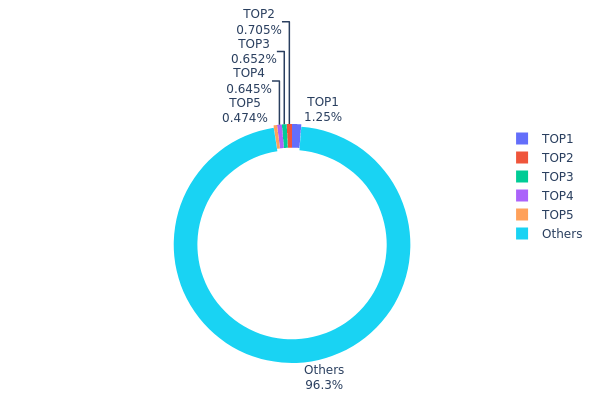2025 BTC Price Prediction: Analyzing Market Trends and Expert Forecasts for Bitcoin's Future Value
Introduction: BTC's Market Position and Investment Value
Bitcoin (BTC), as the pioneer and leader of the cryptocurrency market, has achieved remarkable success since its inception in 2008. As of 2025, Bitcoin's market capitalization has reached $1,933,047,147,812.90, with a circulating supply of approximately 19,948,537 coins, and a price hovering around $96,901.7. This asset, often hailed as "digital gold," is playing an increasingly crucial role in the fields of finance, investment, and cross-border transactions.
This article will provide a comprehensive analysis of Bitcoin's price trends from 2025 to 2030, combining historical patterns, market supply and demand, ecosystem development, and macroeconomic factors to offer professional price predictions and practical investment strategies for investors.
I. BTC Price History Review and Current Market Status
BTC Historical Price Evolution Trajectory
- 2009: Bitcoin launched, price initially negligible
- 2013: First major bull run, price reached $1,000
- 2017: Massive bull market, price peaked at nearly $20,000
- 2018: Bear market, price dropped to around $3,000
- 2021: New all-time high of $69,000
- 2022: Market downturn, price fell below $20,000
BTC Current Market Situation
As of November 14, 2025, Bitcoin is trading at $96,901.7, with a 24-hour decline of 6.14%. The current market capitalization stands at $1,933,047,147,812.90, maintaining Bitcoin's position as the largest cryptocurrency with a market dominance of 55.98%.
Despite the recent price drop, Bitcoin has shown significant growth over the past year, with a 7.31% increase. However, shorter-term trends indicate bearish pressure, with 30-day and 7-day declines of 13.75% and 5.35% respectively.
The all-time high of $126,080 was recorded on October 7, 2025, while the all-time low remains at $67.81 from July 6, 2013. The current price represents a 23.14% decrease from the recent all-time high, suggesting a potential correction phase.
The market sentiment appears cautious, with the Fear and Greed Index indicating "Extreme Fear" at 16, reflecting current investor uncertainty.
Click to view the current BTC market price

BTC Market Sentiment Indicator
2025-11-14 Fear and Greed Index: 16 (Extreme Fear)
Click to view the current Fear & Greed Index
The crypto market is currently gripped by extreme fear, with the Fear and Greed Index at a low of 16. This indicates significant pessimism among investors, potentially creating buying opportunities for contrarian traders. However, caution is advised as extreme fear can sometimes precede further market declines. Investors should consider their risk tolerance and conduct thorough research before making any decisions. Remember, market sentiment can shift rapidly, and it's crucial to stay informed about broader market trends and developments.

BTC Holdings Distribution
The address holdings distribution data provides crucial insights into Bitcoin's ownership structure and concentration levels. Analyzing the top 5 addresses, we observe that they collectively hold approximately 3.72% of the total BTC supply. The largest single address contains 248,600 BTC, representing 1.25% of the total supply, while the remaining top addresses hold between 0.47% to 0.70% each.
This distribution pattern suggests a relatively decentralized ownership structure for Bitcoin. With 96.28% of the supply distributed among addresses outside the top 5, it indicates a wide dispersion of holdings across the network. This level of distribution helps mitigate risks associated with market manipulation by large holders, often referred to as "whales." However, it's important to note that the top addresses still possess significant market influence due to their substantial holdings.
The current distribution reflects a healthy balance between large stakeholders and a diverse user base, contributing to Bitcoin's overall market stability and resistance to centralized control. This structure aligns with Bitcoin's fundamental principle of decentralization, potentially fostering long-term sustainability and reducing systemic risks in the cryptocurrency ecosystem.
Click to view the current BTC Holdings Distribution

| Top | Address | Holding Qty | Holding (%) |
|---|---|---|---|
| 1 | 34xp4v...4Twseo | 248.60K | 1.25% |
| 2 | bc1ql4...8859v2 | 140.57K | 0.70% |
| 3 | bc1qgd...jwvw97 | 130.01K | 0.65% |
| 4 | 3M219K...DjxRP6 | 128.71K | 0.65% |
| 5 | bc1qaz...uxwczt | 94.64K | 0.47% |
| - | Others | 19205.92K | 96.28% |
II. Key Factors Affecting Future BTC Price
Supply Mechanism
- Halving: The Bitcoin halving event reduces the block reward for miners by half every 4 years.
- Historical Pattern: Previous halvings have typically led to significant price increases in the following 12-18 months.
- Current Impact: The next halving is expected in 2024, which could potentially drive up BTC price in 2025.
Institutional and Whale Dynamics
- Institutional Holdings: Major institutions like MicroStrategy and Tesla continue to hold significant BTC positions.
- Corporate Adoption: Companies such as PayPal and Square have integrated Bitcoin into their payment systems.
- National Policies: El Salvador's adoption of Bitcoin as legal tender has set a precedent for other nations considering similar moves.
Macroeconomic Environment
- Monetary Policy Impact: Central banks' policies on interest rates and quantitative easing continue to influence Bitcoin's attractiveness as an alternative asset.
- Inflation Hedging Properties: Bitcoin's performance as a hedge against inflation remains a key factor in its adoption and price movement.
- Geopolitical Factors: Global economic uncertainties and geopolitical tensions often drive investors towards Bitcoin as a safe-haven asset.
Technical Development and Ecosystem Building
- Lightning Network: Continued development and adoption of the Lightning Network is improving Bitcoin's scalability and transaction speed.
- Taproot Upgrade: This upgrade enhances Bitcoin's privacy, efficiency, and smart contract capabilities.
- Ecosystem Applications: The growth of Bitcoin-based DeFi applications and Layer 2 solutions is expanding the cryptocurrency's utility beyond a store of value.
III. BTC Price Prediction for 2025-2030
2025 Outlook
- Conservative prediction: $76,653 - $97,029
- Neutral prediction: $97,029 - $120,316
- Optimistic prediction: $120,316 - $143,603 (requires continued institutional adoption)
2027 Mid-term Outlook
- Market phase expectation: Potential bull market continuation
- Price range forecast:
- 2026: $108,284 - $158,817
- 2027: $120,027 - $159,106
- Key catalysts: Halving event, increased global adoption, regulatory clarity
2030 Long-term Outlook
- Base scenario: $121,554 - $178,756 (assuming steady market growth)
- Optimistic scenario: $178,756 - $198,419 (assuming widespread institutional adoption)
- Transformative scenario: $200,000+ (assuming Bitcoin becomes global reserve asset)
- 2030-12-31: BTC $198,419 (potential peak of long-term bull cycle)
| 年份 | 预测最高价 | 预测平均价格 | 预测最低价 | 涨跌幅 |
|---|---|---|---|---|
| 2025 | 143603.66 | 97029.5 | 76653.31 | 0 |
| 2026 | 158817.89 | 120316.58 | 108284.92 | 24 |
| 2027 | 159106.65 | 139567.23 | 120027.82 | 44 |
| 2028 | 191151.28 | 149336.94 | 89602.16 | 54 |
| 2029 | 187268.52 | 170244.11 | 158327.02 | 75 |
| 2030 | 198419.51 | 178756.32 | 121554.29 | 84 |
IV. Professional BTC Investment Strategies and Risk Management
BTC Investment Methodology
(1) Long-term Holding Strategy
- Suitable for: Conservative investors seeking long-term value
- Operational suggestions:
- Dollar-cost averaging (DCA) to mitigate short-term volatility
- Hold for at least one market cycle (typically 4 years)
- Secure storage in a hardware wallet or reputable custody solution
(2) Active Trading Strategy
- Technical analysis tools:
- Moving Averages: Identify trends and potential reversal points
- Relative Strength Index (RSI): Gauge overbought/oversold conditions
- Key points for swing trading:
- Set clear entry and exit points based on technical indicators
- Use stop-loss orders to manage downside risk
BTC Risk Management Framework
(1) Asset Allocation Principles
- Conservative investors: 1-5% of portfolio
- Moderate investors: 5-10% of portfolio
- Aggressive investors: 10-20% of portfolio
(2) Risk Hedging Solutions
- Diversification: Allocate across various cryptocurrencies and traditional assets
- Options strategies: Use put options for downside protection
(3) Secure Storage Solutions
- Hot wallet recommendation: Gate Web3 Wallet
- Cold storage solution: Hardware wallets for large holdings
- Security precautions: Use two-factor authentication, backup private keys securely
V. Potential Risks and Challenges for BTC
BTC Market Risks
- High volatility: Extreme price fluctuations can lead to significant losses
- Market manipulation: Large holders ('whales') can influence prices
- Liquidity risk: Potential difficulties in executing large trades during market stress
BTC Regulatory Risks
- Regulatory crackdowns: Possibility of stricter regulations or bans in certain jurisdictions
- Tax implications: Evolving tax laws may impact investment returns
- AML/KYC requirements: Increased compliance burdens for exchanges and users
BTC Technical Risks
- Network attacks: Potential 51% attacks or other security vulnerabilities
- Scalability issues: Transaction speed and fees during high network congestion
- Hard fork risks: Potential chain splits leading to uncertainty and volatility
VI. Conclusion and Action Recommendations
BTC Investment Value Assessment
Bitcoin remains a high-risk, high-reward asset with significant long-term potential but subject to extreme short-term volatility. Its value proposition as digital gold and a hedge against inflation remains strong, but regulatory and technical challenges persist.
BTC Investment Recommendations
✅ Newcomers: Start with small, regular investments using DCA strategy ✅ Experienced investors: Consider a core holding with tactical trading around major support/resistance levels ✅ Institutional investors: Explore Bitcoin as part of a diversified alternative asset portfolio, potentially using futures or ETFs for exposure
BTC Trading Participation Methods
- Spot trading: Direct ownership of BTC through reputable exchanges like Gate.com
- Derivatives: Futures and options for leveraged exposure or hedging
- Bitcoin ETFs: Indirect exposure through regulated financial products (where available)
Cryptocurrency investments carry extremely high risks, and this article does not constitute investment advice. Investors should make decisions carefully based on their own risk tolerance and are advised to consult professional financial advisors. Never invest more than you can afford to lose.
FAQ
What is the expected price of BTC in 2025?
Based on current market trends and expert predictions, the expected price of BTC in 2025 could reach around $150,000 to $200,000 per coin.
What will Bitcoin be worth in 2025?
Based on current trends and expert predictions, Bitcoin could potentially reach $150,000 to $200,000 by 2025, driven by increased institutional adoption and global economic factors.
How much will 1 BTC cost in 2025?
Based on current market trends and expert predictions, 1 BTC is expected to cost around $150,000 to $200,000 by 2025, driven by increased adoption and institutional investment.
How much will 1 Bitcoin be worth in 2030?
Based on current trends and expert predictions, 1 Bitcoin could potentially be worth around $500,000 to $1,000,000 by 2030, driven by increased adoption and limited supply.
Share
Content